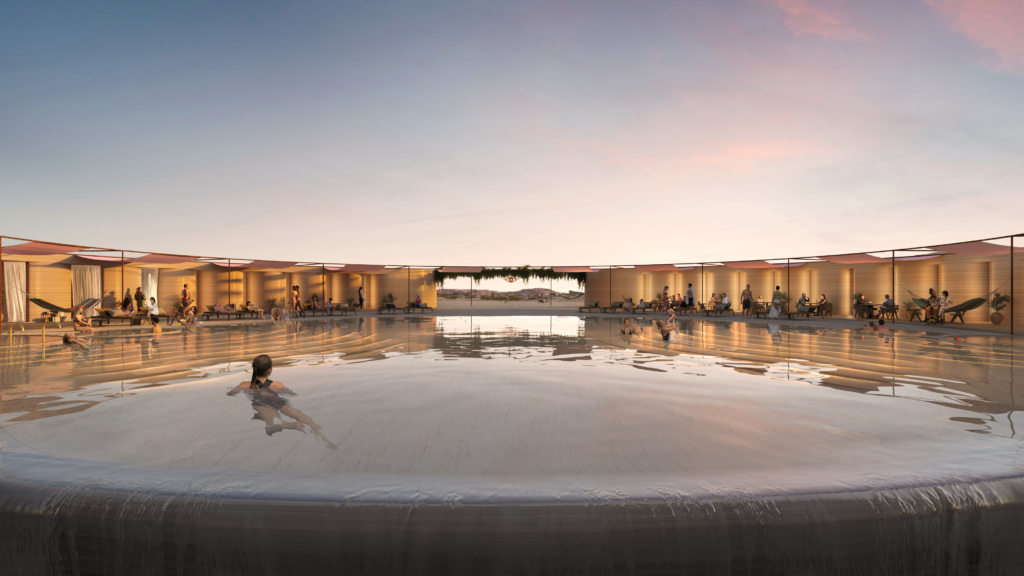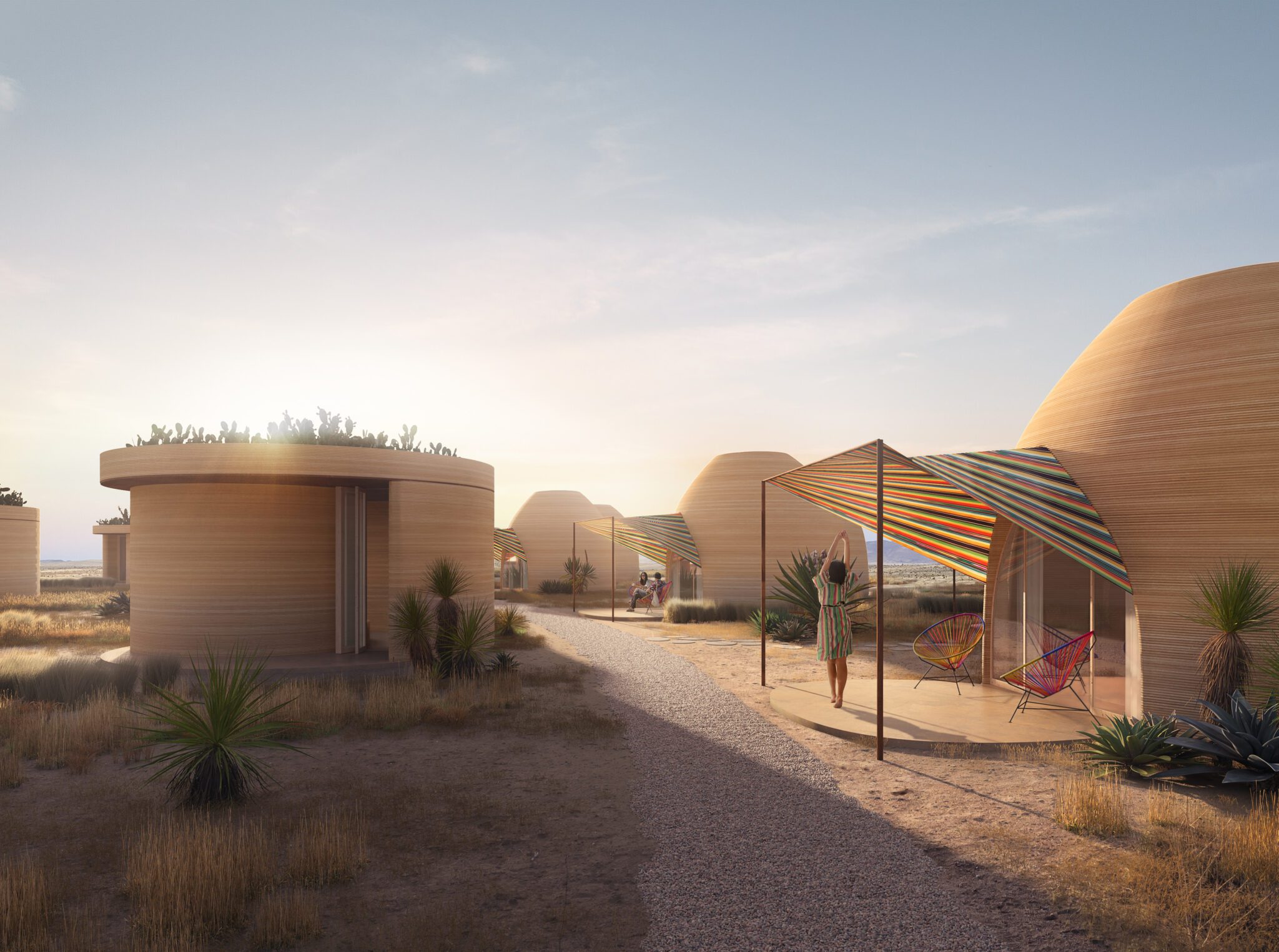Skift Take
Texas hotelier Liz Lambert has linked up with noted architect Bjarke Ingels and 3D printing firm ICON to reimagine the future of El Cosmico. Despite the bleeding edge tech, the emphasis will be on the spirit of self reliance and community that defined the early iterations of the property.

On Experience
Colin Nagy, a marketing strategist, writes this opinion column for Skift on hospitality and business travel. On Experience dissects customer-centric experiences and innovation across the luxury sector, hotels, aviation, and beyond. He also covers the convergence of conservation and hospitality.
You can read all of his writing here.
El Cosmico, in Marfa, Texas, has been synonymous with a free-form lodging experience and a place where art and counterculture combine with high desert hospitality. A campground-meets-hotel, the property has grown from the imaginative vision of Texas-based hotelier Liz Lambert. Through the years, it has attracted wanderers seeking a confluence of the extraordinary and the rustic, the real and the surreal.
“There’s something that is in our American consciousness that is fascinated with this part of the country and I think the really vast skies, the lack of people, the really dramatic geological formations and I think it taps into this thing within all of us that is probably most about self-reliance,” says Lambert.
The property now stands at a fascinating juncture. In partnership with Danish design firm BIG, founded by Bjarke Ingels, Lambert has unveiled the future vision for the property.
It will be made not out of airstream trailers and teepees, but constructed with 3D printing, an innovation once confined to the realms of science fiction. The project is in partnership with ICON, an Austin-based 3D printing company that incidentally, has the NASA contract for future dwellings on the moon.
The property indeed looks like something from the distant future and eschews normal notions of hotels and hospitality. But Lambert also seeks to keep the cultural pulse of the original property intact.
She has articulated the need to preserve El Cosmico’s character while maintaining an openness to change. And while the new dwellings might look like something from the surface of the moon, she asserts that the core fundamentals of the property will remain: intellectual curiosity, the communion with the skies, and the inexplicable feeling of the air in far West Texas.
She cites the Whole Earth Catalog as an intellectual underpinning of the project: “It was a big, big format catalog that pointed you to resources to show you how to do all different kinds of things, whether it be astrology or midwifery or leather crafting to you name it,” says Lambert. “It was pretty vast and I think a lot of the idea of the Whole Earth Catalog was based on that Emersonian idea of self-reliance.”
The property will seek to redefine ideas of spatial design, flexibility, and individuality within the hospitality sector. Beyond the technology and aesthetics of the technology itself, the implications for sustainability are profound.
As a process, 3D printing minimizes waste production, promoting an ethos of responsible consumption aligned with El Cosmico’s core philosophies. The onsite production potential also reduces logistic demands, cutting down carbon footprints. No trucks are needed to move materials in and out of a property.
“I didn’t even know how to picture it until I actually met Jason Ballard and the folks from ICON and went and watched the printers at work,” says Lambert. “And what the printers are basically doing is putting down, laying down a bead at a time of a mix of dirt, water, and a binder that will then do the perimeter wall and some of the interior walls or the wall systems of a building.”
She continues, “ It’s amazing to watch because it doesn’t care about how complicated the curves are or the machinations that the printer needs to go through. It’s just taking information from the software and then creating whatever you’ve been able to draw on CAD.”
3D printing is a continuation of El Cosmico’s tradition of countercultural innovation. Much like the yurts, tepees, and renovated vintage trailers, 3D-printed structures could simply be the newest members of the eclectic collection that defines El Cosmico’s historical landscape.

While change can often provoke a sense of apprehension, especially in a small West Texas town, it is worth noting that El Cosmico’s charm does not reside solely within its physical structures. The soul of the place resides in the stories it harbors, the experiences it facilitates, and the connections it nurtures. As long as these elements are preserved and enhanced, the evolution of their physical form can be embraced.
The new upgrade offers a chance to translate the technology’s potential into tangible experiences that resonate with the El Cosmico ethos, creating spaces that mirror its spirit, even as they break new ground.
Lambert also is excited by a larger space that will allow for more experimentation: “We’ll have more room for more gathering spaces, she says. “So we’re going to have a bathhouse in the pool that I have always longed to manifest. But we’re also going to have a workshop studio and over time we hopefully will be able to do everything from the beginning, but some of this may take a while. Over time, we’ll have a greenhouse. I mean, there’s all kinds of things I want that I’m not even going to say out loud,” she laughs.
Have a confidential tip for Skift? Get in touch
Tags: On Experience
